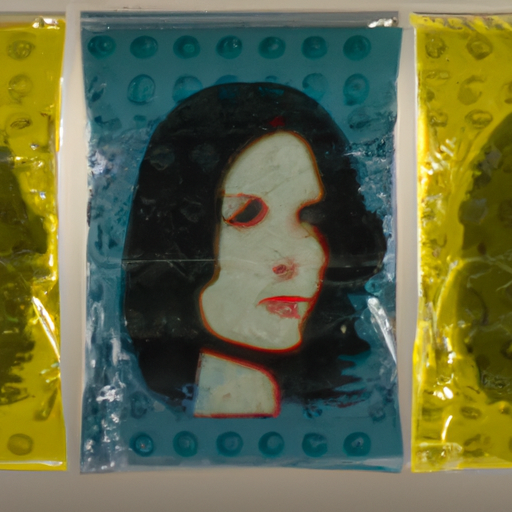
-
Table of Contents
Sustainable Packaging Materials: Beyond Plastics

As the world becomes more aware of the environmental impact of plastic waste, there is a growing demand for sustainable packaging materials. While plastics have dominated the packaging industry for decades due to their versatility and low cost, their negative impact on the environment cannot be ignored. Fortunately, there are a variety of alternative materials that offer sustainable solutions without compromising functionality or aesthetics. In this article, we will explore some of these innovative packaging materials and their potential to revolutionize the industry.
The Problem with Plastics
Plastics have become an integral part of our daily lives, but their environmental consequences are alarming. Here are some key issues associated with plastic packaging:
- Non-biodegradable: Plastics can take hundreds of years to decompose, leading to the accumulation of waste in landfills and oceans.
- Microplastics: Over time, plastics break down into tiny particles known as microplastics, which can contaminate soil, water, and even the air we breathe.
- Resource-intensive production: The production of plastics requires significant amounts of fossil fuels, contributing to greenhouse gas emissions and climate change.
- Single-use culture: The convenience of single-use plastic packaging has led to a throwaway culture, resulting in excessive waste generation.
Exploring Sustainable Alternatives
Thankfully, there is a growing range of sustainable packaging materials that offer viable alternatives to traditional plastics. Let’s take a closer look at some of these innovative materials:
1. Bioplastics
Bioplastics are derived from renewable sources such as cornstarch, sugarcane, or algae. Unlike traditional plastics, bioplastics are biodegradable and have a lower carbon footprint. They can be used for a wide range of applications, including packaging films, bottles, and containers. For example, the company NatureWorks produces Ingeo®, a bioplastic made from plant sugars that can be used as a substitute for petroleum-based plastics.
2. Paper and Cardboard
Paper and cardboard have long been used for packaging, but advancements in technology have made them even more sustainable. Recycled paper and cardboard reduce the demand for virgin materials and help divert waste from landfills. Additionally, innovative techniques such as molded pulp packaging, which uses a mixture of water and recycled paper, offer a sustainable alternative to traditional plastic packaging.
3. Mushroom Packaging
Mushroom packaging, also known as mycelium packaging, is a biodegradable and compostable material made from agricultural waste and the root structure of mushrooms. It can be molded into various shapes and provides excellent insulation and shock absorption properties. Companies like Ecovative Design have successfully commercialized mushroom packaging, offering a sustainable alternative to foam and plastic-based packaging materials.
4. Seaweed Packaging
Seaweed, a renewable and abundant resource, is gaining attention as a sustainable packaging material. It can be used to create flexible films and coatings that are biodegradable and have excellent barrier properties. Notably, the startup Notpla has developed Ooho, a seaweed-based packaging solution for beverages that can be consumed along with the drink or biodegrade within weeks.
5. Plant-based Fibers
Plant-based fibers, such as hemp, bamboo, and cotton, offer sustainable alternatives to traditional packaging materials. These fibers are renewable, biodegradable, and can be used to create a wide range of packaging products, including bags, pouches, and wraps. For example, the company Hemp Plastic produces packaging made from hemp fibers, which are not only biodegradable but also have a lower carbon footprint compared to traditional plastics.
The Benefits of Sustainable Packaging Materials
Adopting sustainable packaging materials offers numerous benefits for businesses, consumers, and the environment:
- Reduced environmental impact: Sustainable packaging materials help reduce waste generation, carbon emissions, and reliance on non-renewable resources.
- Enhanced brand image: Companies that prioritize sustainability can differentiate themselves from competitors and attract environmentally conscious consumers.
- Regulatory compliance: As governments worldwide implement stricter regulations on plastic waste, using sustainable packaging materials can help businesses stay ahead of compliance requirements.
- Consumer preference: Studies show that a growing number of consumers prefer products packaged in sustainable materials, leading to increased brand loyalty and sales.
- Innovation and market opportunities: The shift towards sustainable packaging materials opens up new avenues for innovation and product differentiation, creating opportunities for businesses to tap into emerging markets.
Conclusion
The need for sustainable packaging materials has never been more urgent. As the negative environmental impact of plastics becomes increasingly apparent, businesses and consumers alike are seeking alternatives that are both functional and eco-friendly. The materials discussed in this article represent just a fraction of the innovative solutions available. By embracing sustainable packaging materials, we can reduce waste, conserve resources, and create a more sustainable future for generations to come.
